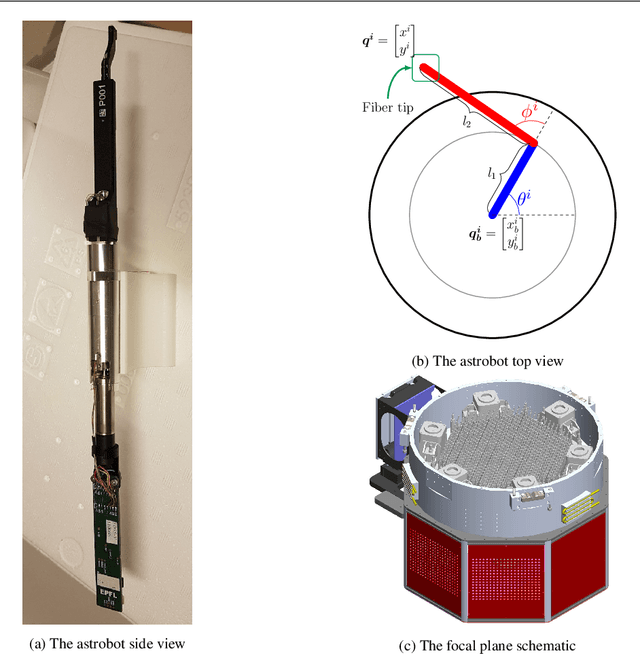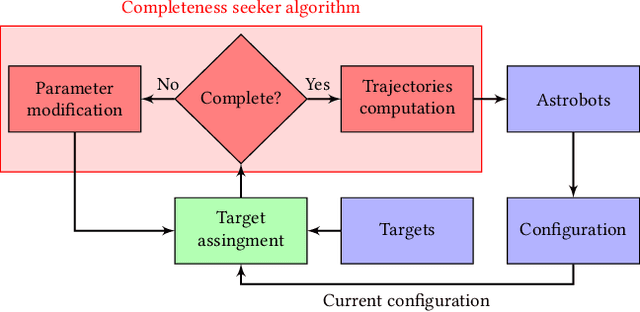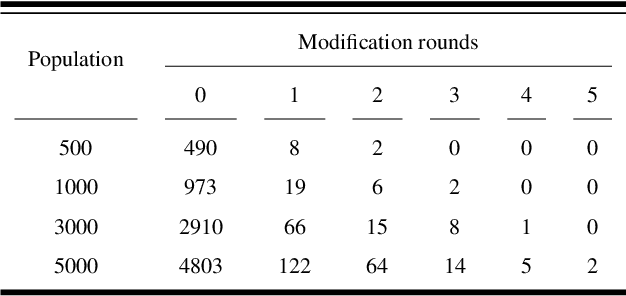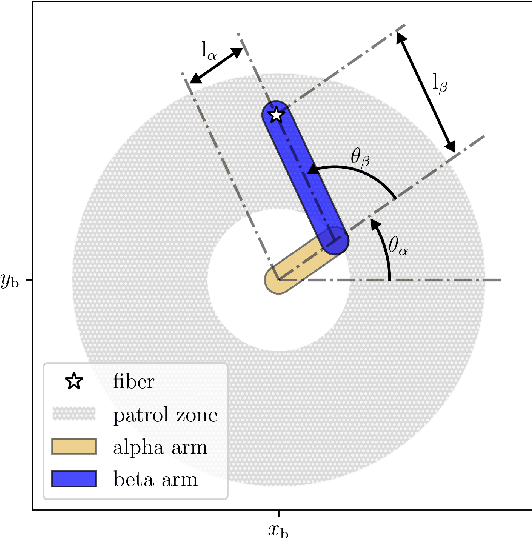Loïc Grossen
Experimental evaluation of complete safe coordination of astrobots for Sloan Digital Sky Survey V
Dec 19, 2020



Abstract:The data throughput of massive spectroscopic surveys in the course of each observation is directly coordinated with the number of optical fibers which reach their target. In this paper, we evaluate the safety and the performance of the astrobots coordination in SDSS-V by conducting various experimental and simulated tests. We illustrate that our strategy provides a complete coordination condition which depends on the operational characteristics of astrobots, their configurations, and their targets. Namely, a coordination method based on the notion of cooperative artificial potential fields is used to generate safe and complete trajectories for astrobots. Optimal target assignment further improves the performance of the used algorithm in terms of faster convergences and less oscillatory movements. Both random targets and galaxy catalog targets are employed to observe the coordination success of the algorithm in various target distributions. The proposed method is capable of handling all potential collisions in the course of coordination. Once the completeness condition is fulfilled according to initial configuration of astrobots and their targets, the algorithm reaches full convergence of astrobots. Should one assign targets to astrobots using efficient strategies, convergence time as well as the number of oscillations decrease in the course of coordination. Rare incomplete scenarios are simply resolved by trivial modifications of astrobots swarms' parameters.
* https://link.springer.com/article/10.1007/s10686-020-09687-4
SDSS-V Algorithms: Fast, Collision-Free Trajectory Planning for Heavily Overlapping Robotic Fiber Positioners
Dec 08, 2020



Abstract:Robotic fiber positioner (RFP) arrays are becoming heavily adopted in wide field massively multiplexed spectroscopic survey instruments. RFP arrays decrease nightly operational overheads through rapid reconfiguration between fields and exposures. In comparison to similar instruments, SDSS-V has selected a very dense RFP packing scheme where any point in a field is typically accessible to three or more robots. This design provides flexibility in target assignment. However, the task of collision-less trajectory planning is especially challenging. We present two multi-agent distributed control strategies that are highly efficient and computationally inexpensive for determining collision-free paths for RFPs in heavily overlapping workspaces. We demonstrate that a reconfiguration path between two arbitrary robot configurations can be efficiently found if "folded" state, in which all robot arms are retracted and aligned in a lattice-like orientation, is inserted between the initial and final states. Although developed for SDSS-V, the approach we describe is generic and so applicable to a wide range of RFP designs and layouts. Robotic fiber positioner technology continues to advance rapidly, and in the near future ultra-densely packed RFP designs may be feasible. Our algorithms are especially capable in routing paths in very crowded environments, where we see efficient results even in regimes significantly more crowded than the SDSS-V RFP design.
 Add to Chrome
Add to Chrome Add to Firefox
Add to Firefox Add to Edge
Add to Edge